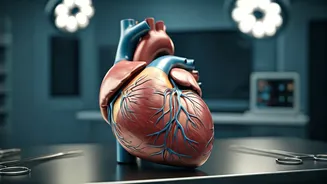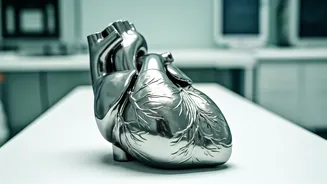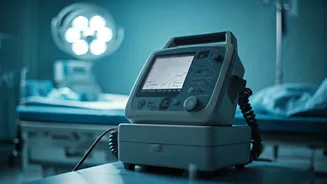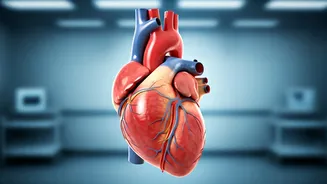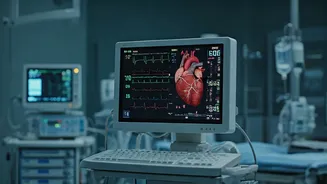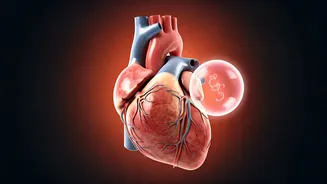Chest Discomfort
The most widely known sign of a heart attack is chest pain or pressure. Described as a squeezing, tightness, or aching sensation in the center of the chest,
this discomfort often feels like a heavy weight. While this is a common symptom in both men and women, the intensity and duration can vary. The pain may radiate to other areas, including the left arm, jaw, neck, back, or even the abdomen. If chest pain occurs, especially with other symptoms, seeking immediate medical attention is essential, as time is of the essence.
Breathing Difficulties
Shortness of breath is another significant indicator of a potential heart attack. The feeling of not being able to catch one's breath, even when resting, should not be overlooked. This symptom may occur alongside chest pain or independently. It's critical to monitor any sudden changes in breathing patterns, especially if they are accompanied by other warning signs. Prompt medical evaluation is required if an individual experiences difficulty breathing, as it might signal severe underlying heart issues. This is a crucial sign, and ignoring it can have grave consequences.
Pain Beyond Chest
Pain that extends beyond the chest area is another key indicator. Discomfort can spread to the jaw, neck, back, or arms, often on the left side but potentially on both sides. Some individuals might feel pain in their upper abdomen, which might be mistaken for indigestion or heartburn. It's imperative to pay close attention to the nature and location of pain and its association with other symptoms. Any unexplained pain in these areas, coupled with chest discomfort or shortness of breath, calls for an immediate checkup to rule out a heart attack or other cardiac issues.
Unusual Physical Symptoms
Unexplained fatigue, nausea, or lightheadedness can also indicate an ongoing heart attack. These symptoms are more common in women but can affect anyone. Feeling unusually tired, nauseous, or dizzy without any apparent cause is a warning sign. Sweating, a cold clammy skin, or feeling generally unwell can accompany these symptoms. The symptoms are frequently misdiagnosed as being due to the flu or other conditions. Being aware of these less obvious signs is crucial. Medical assistance is urgently needed if these symptoms are present, as a heart attack can cause significant damage in a short time.
Recognizing Atypical Symptoms
Atypical heart attacks often present with different symptoms than the classic ones. Silent heart attacks, where there is little or no chest pain, can occur. Women, in particular, may experience less typical symptoms. These may include extreme fatigue, nausea, or jaw pain. Such atypical presentations highlight the need to be aware of all potential indicators of a heart attack. A delay in diagnosis can have devastating consequences. Immediate medical intervention is critical, regardless of how obvious the symptoms seem.
Gender-Specific Variations
Heart attack symptoms can differ between men and women. While men often experience classic chest pain, women might present with more subtle symptoms such as fatigue, shortness of breath, nausea, and pain in the jaw or back. Women might attribute these symptoms to other causes, leading to a delay in seeking medical care. The recognition of these distinctions is essential to ensure prompt diagnosis and treatment. It is important to not to ignore any potential signs of a heart attack and get immediate help when needed.
Immediate Actions Needed
If you or someone you know experiences symptoms of a heart attack, the first step is to call emergency services. Do not delay seeking medical help. While waiting for paramedics to arrive, remain calm and try to stay at rest. If the person is conscious and able to, have them chew and swallow an aspirin, unless they are allergic to aspirin or have been told not to take it by a doctor. This simple step can help reduce blood clotting. Timely medical intervention significantly improves the chances of survival and reduces the risk of long-term complications.

